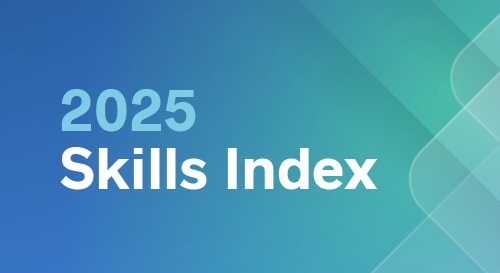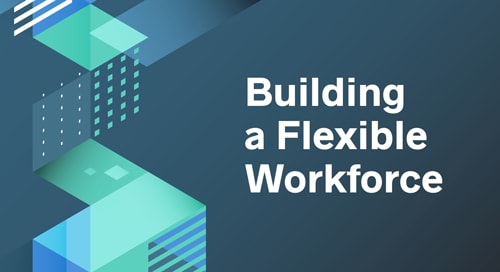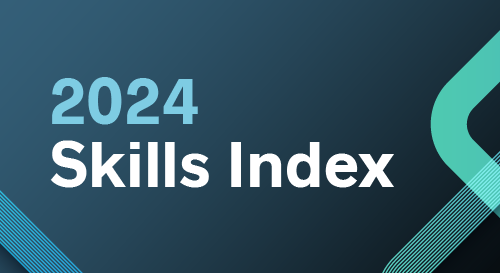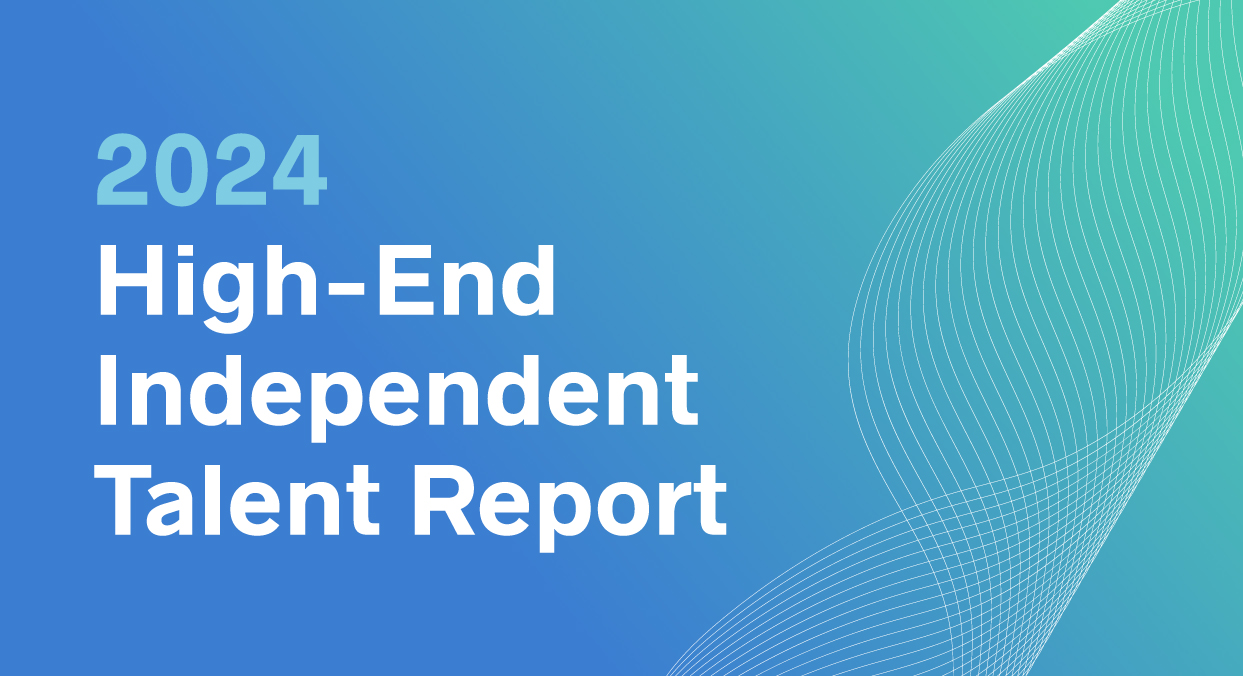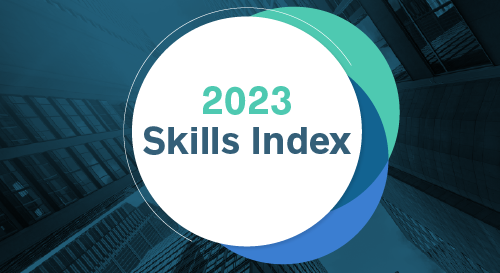
This post originally appeared as a working paper titled “After Covid-19, How Does Innovation Change” from New Markets Advisors, a boutique consulting firm specializing in innovation opportunities and capabilities. Download a copy here.
Executive Summary
For many organizations, the challenges faced in 2020 were unprecedented. To survive the pandemic and prepare for an uncertain future, businesses had to innovate in ways they never had before. In this paper, we lay out the five innovation practices that found widespread adoption over the last year, and that we recommend companies continue embracing well after COVID-19.
Meet the Authors

Stephen Wunker
Managing Director, New Markets Advisors

Jennifer Law
Principal, New Markets Advisors

Charlotte Desprat
Manager, New Markets Advisors
Lessons on Innovation from Covid-19
We are all innovators now. As the pandemic slowly wanes, we can look back on the last year and a half knowing that we have discovered innovation muscles that we didn’t know we had. We needed to innovate in order to cope with the upheaval in our personal lives, as well as for businesses to continue to thrive.
Notably, the way that organizations approach innovation changed massively over a relatively short period of time. The status quo—what New Markets has commonly observed in enterprises over the past decade—is that innovation has typically been product-focused instead of customer-led, nested in big programs, and split between functional silos instead of being a widespread habit. These companies have wanted to do things differently—which is one reason why they engaged us—but breaking with long-held habits was tough.
COVID-19 demanded new behaviors if companies were to survive. Speed, ongoing adaptation, and multi-dimensional innovation reigned as enterprises adjusted to the pandemic. It worked. Amid all its hardships, this past year and a half witnessed perhaps the fastest pace of innovation the world has ever seen—from new business models to new forms of customer interaction, and a great deal more. This is one of the pandemic’s unheralded triumphs, and it indicates that much better times lie ahead.
What’s changed? We evaluated the state of innovation across dozens of clients and distilled our findings into five key principles you can embrace to sustain and keep up your innovation strengths:
- Embrace uncertainty
- Innovate with a purpose
- Think beyond the product
- Learn by doing
- Experiment and scale fast
1. Embrace Uncertainty with Futurecasting
The pandemic saw a major defeat for hubris. Organizations learned that the future often does not arrive through orderly extrapolation, but via sudden shifts in which trends combine to create fast, massive upheaval. The turn of the millennium was another such time. While many of us may crave stability ahead, the pace of economic, societal, and political change currently shows few signs of deceleration. In these times, gaining clearer visibility about the future requires both concerted effort and humility.
FutureCasting—a disciplined method of determining what your company’s future can be—is a way to surmount these challenges. Through approaches we have described elsewhere, including trend analysis with scenario planning, mechanisms to determine what COVID-related behavior changes will stick, as well as the Uncertainty Matrix, you can identify both the most plausible futures as well as edge cases that create threat and opportunity. This vision of the future then establishes the context for determining what growth options to seek.
Schools rank among the newest adopters of scenario planning. While some institutions had used the tool before, COVID-19 fostered widespread usage. Whether they are designing near-term contingency plans or preparing for the post-pandemic future, educators have had to wrestle with the uncertainty that lies ahead.
Let’s take a look at Western Michigan University, where scenario planning has become a routine exercise since the outbreak of COVID-19. As the associate provost of their strategic team explains, the pandemic allowed them to build alternative futures more seriously and take a closer look at more pessimistic scenarios. They also became more aware of the factors they should pay attention to. In the case of international student enrollment for instance, the possibility of travel abroad is a major factor for both recruitment and the balance of virtual vs. in-person learning for foreign students
2. Innovate with a Purpose
Innovation is a means to an end, and the end should be defined for innovation to be truly impactful. COVID-19 forced organizations to pick concrete innovation goals, such as making up for lost revenue when retail stores closed, adapting an offering to virtual delivery, or capitalizing on an influx of new users. We didn’t have time to be innovative just for the sake of being innovative. Innovation needed to solve tangible problems.
Before COVID-19, organizations could be lazier about their innovation mandate. They could scrape by without asking hard strategic questions, like “Should our innovation efforts be more about defending against rivals or about creating new growth?” or “Should we focus more on lowering costs, raising prices, or winning new customer types?” They could gloss over challenging conversations about how much risk they were willing to take, and what timeframes were most important for realizing their innovation goals.
These foundational questions are critical to ensure that innovation energies focus on what truly matters. COVID-19 simplified things by forcing organizations to adapt fast to survive in the near term. That typically meant focusing on business models and customer engagement over new product introductions, and it was essential to concentrate foremost on the most important current customers. Clear enough. For the future, you need to establish where the bullseye lies and articulate your innovation purpose with rigor.
When the pandemic first hit, retailers scrambled to digitize their collections and put together online showrooms. For many, this meant investing in augmented reality, or AR, to allow their users to examine true-to-scale products in real-life environments. While AR wasn’t new to the home design space, with Ikea launching Ikea Place in 2017, COVID- 19 turned the online shopping experience into an urgent priority for the entire industry.
But when setting these goals for themselves, many retailers were clear that this wasn’t simply about immediate cashflows. As the co-founder of furniture company Castlery explains, they were also preparing for a gradual move towards a “low-touch” environment in the longer term. For these reasons, they not only invested in designing true-to-scale digitized products, but also focused on allowing users to assess fabric textures and colors directly from their screen. By clarifying their overarching objectives, they ensured that they were allocating resources to the right types of innovation.
3. Think Beyond the Product
COVID-19 taught us that innovation doesn’t (and shouldn’t) just have to be about new products. While companies often focus on new products as the most tangible fruits of innovation, that is not enough. As we’ve explored with Deloitte’s Doblin unit, there are actually Ten Types of Innovation that enable companies to move multi-dimensionally. Moreover, two of these non-product types of innovation—the business model and the customer experience—are associated with greatly outsized financial returns.
During COVID-19, many organizations reconsidered, experimented, and redesigned their businesses. Restaurants became meal preparation services, selling a week’s worth of cooking at once packaged into a small box. Ski resorts reconfigured how they move skiers around a mountain in socially distanced ways.
Even as vaccine boosters roll out and the grip of COVID-19 loosens, continue to push your organization to think outside of product innovation. Consider also how to create a repeatable process around doing so. Organizations often have well-articulated processes for developing new products, but other forms of innovation seldom have much of a process at all. It doesn’t need to be fancy, but a basic and repeatable mechanism to innovate beyond the product saves effort, money, and time.
Beware! Although enterprises often unlock many new ideas by exploring non-product innovation, you must ensure that these concepts stay rooted in customer needs. Use our framework of the Jobs Atlas, detailed in this working paper and laid out in our book Jobs to be Done, to ensure that you are focused on what really matters to customers.
In the spring of 2020, New Markets Advisors helped a global food ingredients company determine its innovation strategy. One of the key objectives was to focus innovation efforts on the manufacturing process, and not simply on the food category itself, in order to open up new vectors for change. The client was also eager to rethink the end-customer experience through different packaging or formulations of the same product. After a series of internal workshops, the company decided to establish a handful of Centers of Excellence that would bring together different business units to work on a handful of key topics. This cross-functional set-up helped ensure that the company spread its learnings from one silo to the next and that it continued to innovate beyond a specific ingredient category.
4. Experiment and Scale Fast
Humility should apply not just to projecting the future, but also to assuming how innovations will take hold in the marketplace. A process of disciplined experimentation enables rapid, purposeful learning through experimenting in the real world. If your industry doesn’t readily permit in-market experimentation, for instance because it is highly regulated, consider other ways to learn fast from real customers. To build speed, consider highly targeted experiments of particular variables using the scientific method. Experiments testing an overall proposition can be valuable too, but they take time and are often most valuable toward the end of an innovation process when the key need is to identify operational kinks.
Even after zeroing in on an idea, COVID-19 did not allow for much time to pilot. Small-scale initial efforts can be valuable, but they have a tendency to stretch on and on. Move faster. Learn in a foothold market selected for its ability to provide quick insight and validation, all the while plotting how to scale up. The need for scale will inform what you test, such as whether customers can deploy innovations without extensive support from your organization.
The learning doesn’t stop as you scale. Ensure you have a system to capture new findings, and set pivot points into your plan that force careful consideration of what you have discovered as you build momentum.
Twitter saw a record number of users at the start of the pandemic and wanted to retain this audience through new offerings. From previous research, Twitter staff knew that users struggled to express themselves comfortably through tweets that could be seen by anyone and feel permanent. So in early 2020, Twitter decided to tap into this opportunity by building a new concept called Fleets—tweets that disappear within 24 hours and don’t get Retweets, Likes, or public replies. But it had to test its appeal first. After buying a startup specialized in ephemeral stories in February 2020, Twitter moved through a rapid succession of experiments, starting in March with internal tests and user research in Brazil. Two weeks later, it tested Fleets in Italy, and another two weeks later in India, with each test building off of the previous one. These staged experiments allowed for a constructive and swift roll-out of Twitter’s newest product.
A year later, Twitter realized Fleets was not gaining enough traction and decided to fold it. But even then, they focused on the key learnings from their journey. While Fleets itself may not have succeeded, their experiments allowed them to test other ideas such as full-screen vertical ad formats, as well as plan for updates to the Tweet composer and camera.
5. Spread the Competencies Through Learning-by-Doing
The principles in this paper are not conveyed solely through classroom learning. While it helps to have a clear, common grounding in core methodologies, nothing is better than learning through action. Give people the key methods and then push them to move forward. As we saw with COVID-19, once the pandemic forced people to act fast, they often found that organizations could move much more rapidly than previously thought. To ensure that the principles are being deployed, embed into your projects periodic checkpoints to discuss methods used, not just project progress. What did people do? What were the surprises along the way? What have they learned for the future?
When it comes to innovation training, there is a huge array of formats available, from half-day sprints to week-long immersions to semester-long online courses. What we have found to be particularly effective is centering innovation training around solving a real business need, so that you truly learn by doing.
At a major U.S. regional bank, participants were assigned real business challenges such as increasing credit card loyalty or boosting engagement from younger customers. Over the next three months, New Markets Advisors guided them through the innovation process, from problem investigation to ideation to experimentation. The biggest intangible innovation takeaway was the confidence booster—because they had done the innovation process once with us, they knew they could do it again on their own.
How to Get Started
- Start your Futurecasting now:
Peering into the future could be an endless exercise, but it doesn’t need to be. Take 2 – 3 months to generate potential futures in a rigorous way, linking those futures to what they mean for your company in its current state and the gaps your face. Then use those futures to generate highly specific “From…To” statements, laying out exactly what states you have to move from and to so that you can thrive in the future you have laid out.
- Build your innovation strategy:
Given that evolution you’ve laid out in the “From…To” statements, and the details of the futures you have projected, determine what innovations you are seeking. Typically, companies lay out the strategy in terms of factors such as:
- Types of innovation to prioritize
- Offensive vs. defensive rationale for those innovations
- Strategic imperatives underlying the innovations (premiumization, adjacency expansion, etc.)
- Investment they are willing to make
- Expected failure and redirection rates
- Financial goals
- Timeframe for realizing your goals
- Determine your metrics:
If you don’t measure your efforts carefully, they may wane as urgent priorities inevitably arise. Moreover, the forces of gravity in organizations tend to lead innovation toward making very small, diffuse bets, with perhaps a couple of wildly ambitious projects thrown into the mix to show big aspirations. No healthy investment portfolio should look like that. Create a set of metrics about your inputs, outputs, and processes that ensure you stay on track.
Closing Thoughts
While the last year and a half was a tough period for the world, it underscored how we can rise to huge challenges. From FutureCasting and setting clear objectives to quick experiments, organizations have adjusted their innovation practices to the new reality they faced. For the future, we can embrace newfound speed and agility to build new types of innovation approaches which will endure.
GET THE SKILLS YOU NEED
Thousands of independent consultants, subject matter experts, project managers, and interim executives are ready to help address your biggest business opportunities.
About the Author
Follow on Linkedin Visit Website More Content by New Markets Advisors


